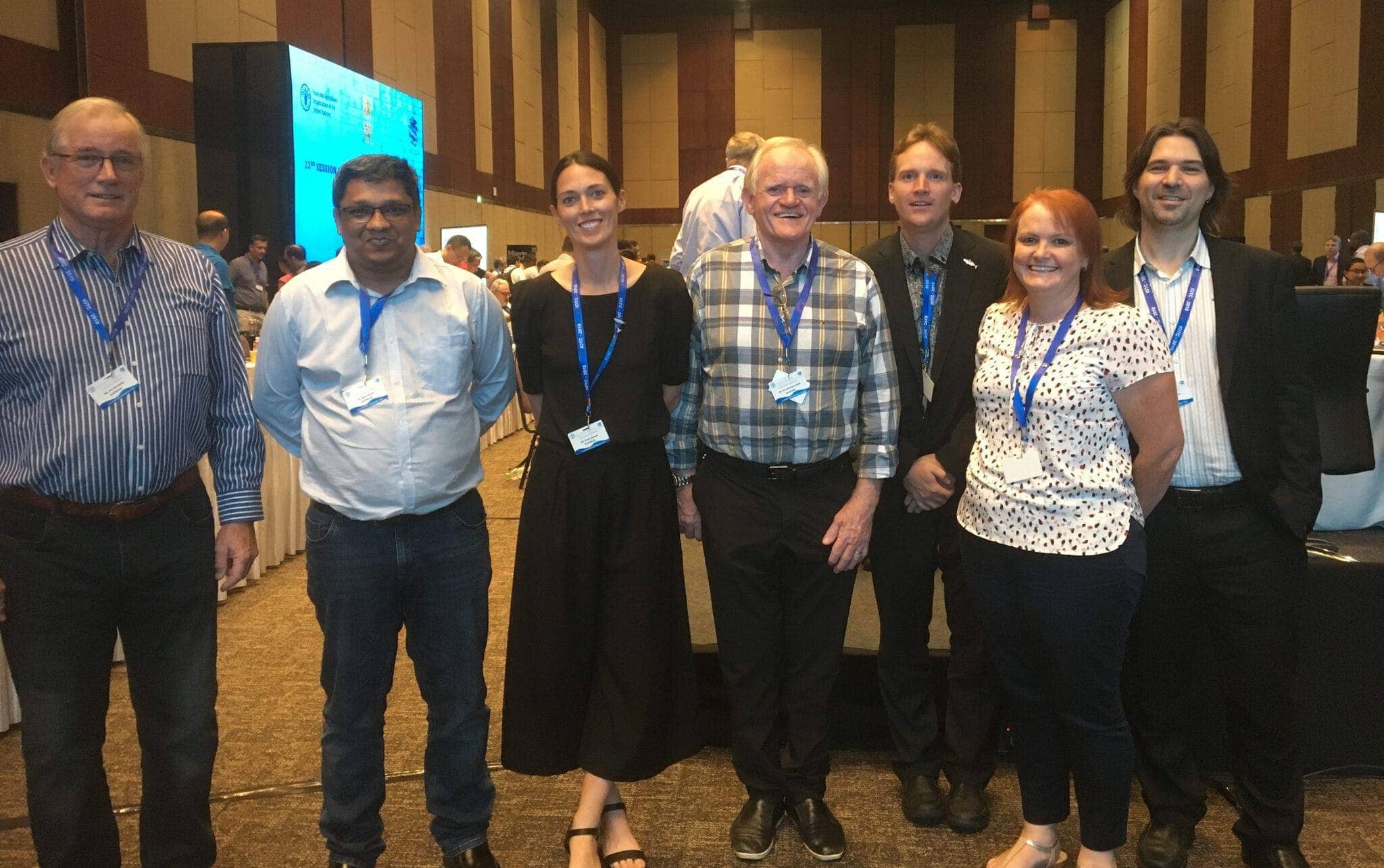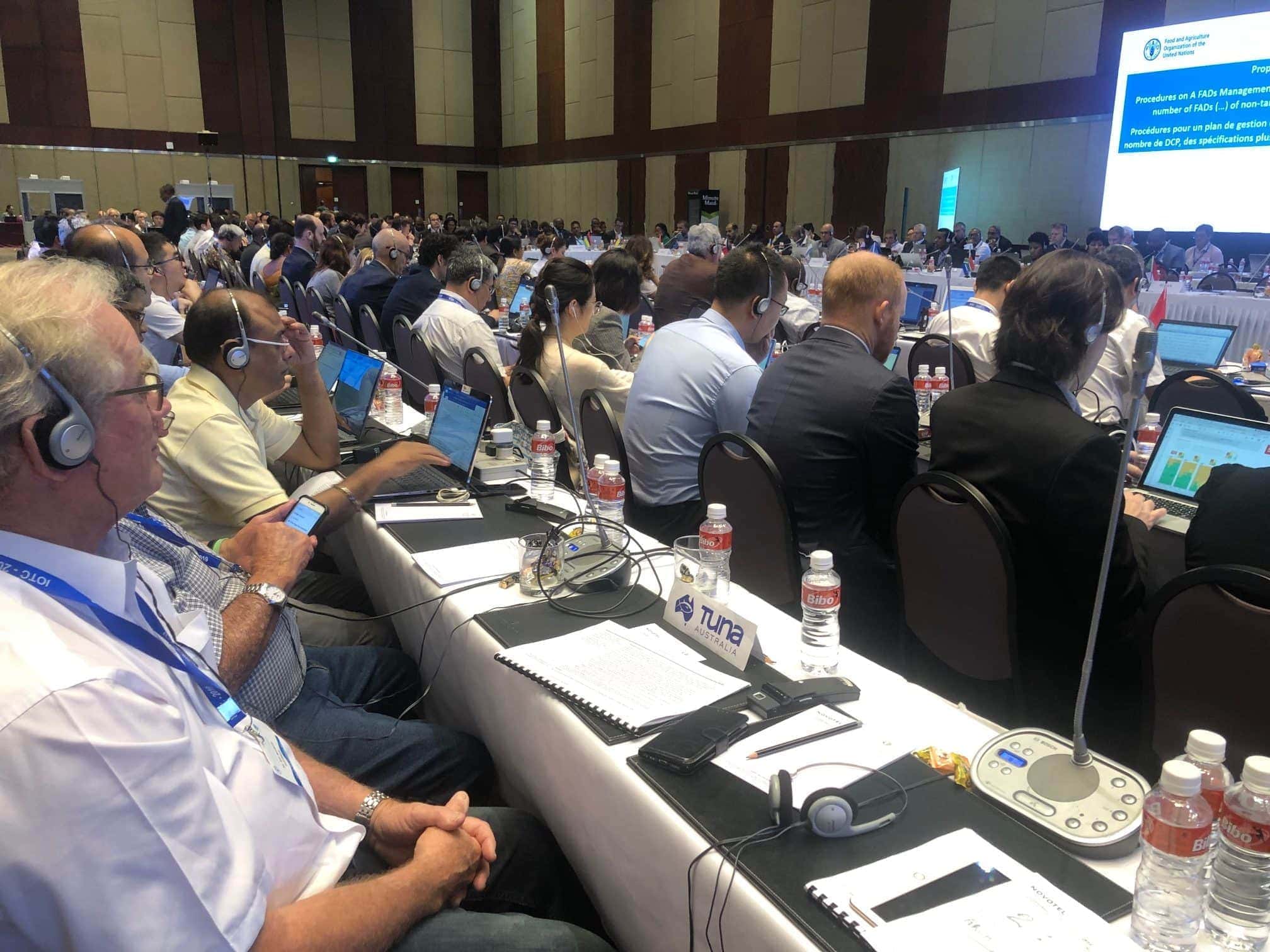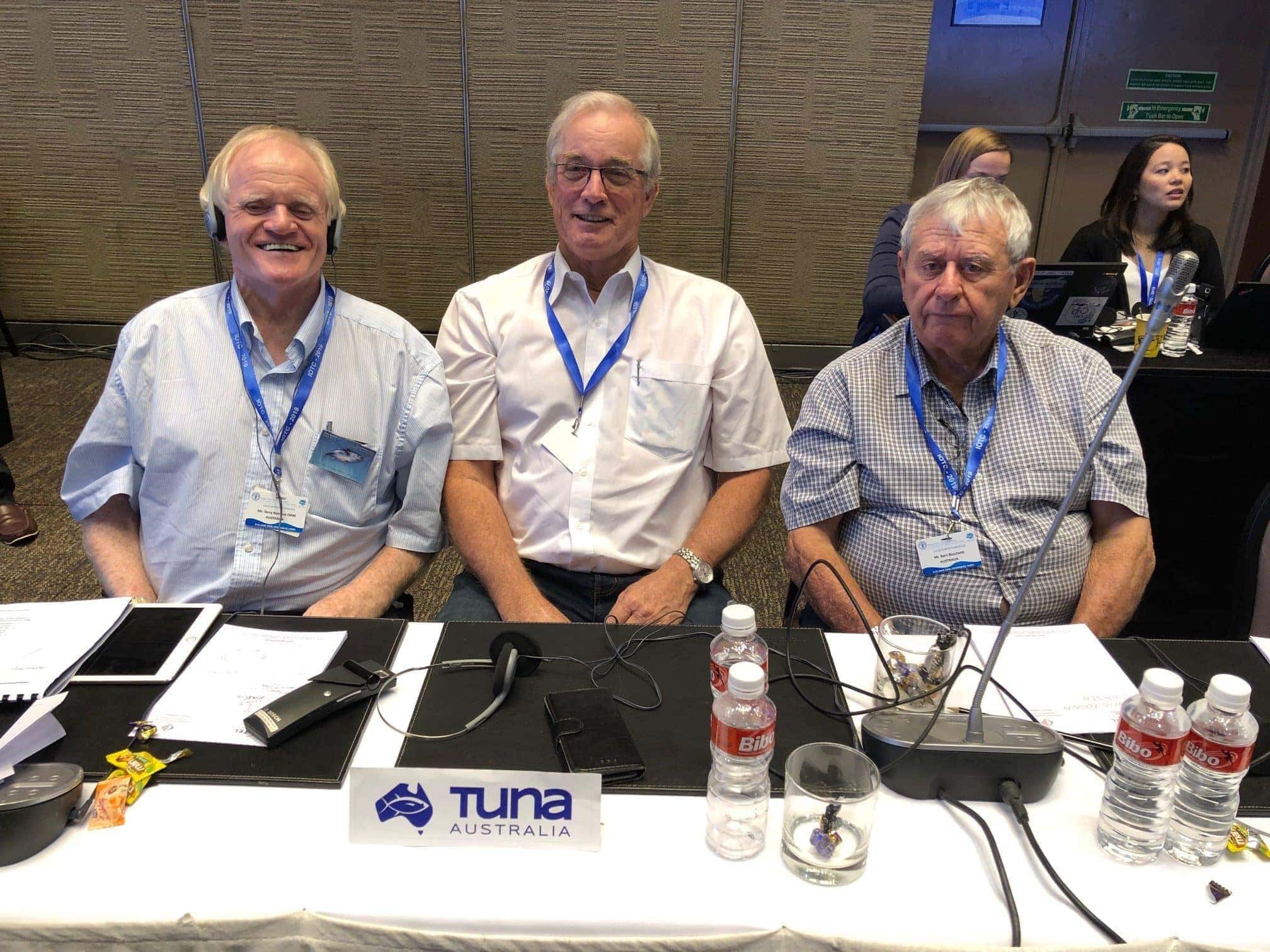‘Favourable outcome’: Australia campaigns to keep 1 percent Indian Ocean tuna quota
An Australian delegation has made a strong case to the Indian Ocean Tuna Commission (IOTC) for maintaining a modest but fair share of the Indian Ocean tuna catch, allowing delegates to pursue a positive outcome when the final quotas are allocated.
The discussion took place at the IOTC’s 23rd annual meeting on 17–21 June 2019 held in Hyderabad, India, and continues several years of negotiations on the topic.
“Outcomes from the meeting were favourable to Australian interests and were made possible by the concerted and skillful efforts of the Australian Government delegation,” said Terry Romaro of Ship Agencies Australia, who attended the meeting.
The delegation was led by Melissa Brown (Assistant Secretary, Fisheries Branch, Department of Agriculture), and included senior advisors from the Department of Agriculture, AFMA and ABARES, along with Tuna Australia members Terry Romaro OAM, Kim Newbold (Hawkness Pty Ltd) and Bert Boschetti (Latitude Fisheries Pty Ltd).

Representatives of the Australian delegation, including Mr Kim Newbold (industry), Dr. Saiful Karim (QUT), Ms Susie Howell (DoA), Mr Terry Romaro OAM (industry), Mr Trent Timmis (AFMA), Ms Melissa Brown (DoA) and Dr. Ashley Williams (ABARES).
Protecting a ‘modest share’ of quota
Currently, Australia has a domestic quota of 10,000 tons (1 percent) of tuna and billfish species in the Indian Ocean Tuna Fishery, which has an estimated catch of 1,000,000 tons.
“Industry insists on at least maintaining the existing Australian quota allocations made by the Australian Fisheries Management Association (AFMA) because we should actually be entitled to a larger share given the massive size of the Australian fishing zone in the Indian Ocean,” said Romaro, an alternate director of Tuna Australia.
In recent years, large distant water fleets have pushed to secure the majority of the proposed Indian Ocean tuna quota allocations based on catch history. But Romaro explains that “Australia has a lack of recent catch history, making it hard to justify its 1 percent share to IOTC on that basis.”
“Our argument is that we’ve chosen to leave the fish swimming and multiplying, an approach known as ‘banking the catch’.
“We dispute the distant water nations’ insistence on using catch history to formulate allocations, because it’s from their current catch practices and subsidised fleets that some species are now being overcaught.”
As no consensus on the quota allocation was achieved at this IOTC session, the continuing discussions have been deferred to the 24th annual meeting in 2020 to provide more time to discuss and negotiate an acceptable outcome for all participating countries.

The 23rd IOTC annual meeting in India.
Finding the right formula
After attending his first IOTC meeting last year and seeing the pressure on the Australian delegation, Kim Newbold attended again this year to lend his support.
“The formula needed to fish the Western Tuna and Billfish Fishery (WTBF) successfully is different now to the historic and traditional wet fish approach used by artisanal and short-range coastal fishers,” said Newbold of Hawkness Pty Ltd based in Geraldton, Western Australia.
“The use of ultra-low temperature freezer tuna fishing vessels on a contracted basis for shorter and better-targeted operations in the year is essential for Australia to catch its proper share of the IOTC-managed fishery.
“The Australian fishery requires a framework that allows time and spatially-flexible involvement of commercially-efficient and less-interactively intrusive freezer vessels.”

Tuna Australia representatives (L-R) Terry Romaro OAM, Kim Newbold and Bert Boschetti.
Besides the quota allocation formula, the Australian delegation was interested in discussions on the yellowfin tuna catch reduction and reducing fish aggregating device (FAD) numbers that result in significant catches of baby yellowfin tuna in the West Indian Ocean.
“The number of FADs that the giant purse seine vessels from the European Union can operate was only slightly reduced from 350 active to 300 active units deployed at any one time,” said Bert Boschetti of Latitude Fisheries Pty Ltd, who has fished the WTBF since day one.
“But we are hopeful it gives the baby yellowfin tuna a slightly better opportunity to escape and breed.”
A cause worth fighting for
Romaro has attended most of the IOTC meetings covering tropical tunas in the last 10 years, as well as all the southern bluefin tuna meetings held by the Commission for the Conservation of Southern Bluefin Tuna.
He says that attending these meetings is critical to maintaining Australia’s share of international-managed fisheries.
“We must keep vigilant to maintain and improve Australia’s stake in the international tuna industry as many powerhouse nations are only too happy to eat away at our entitlements.
“Our government needs to stay strong on the matter of our allocation share and not be prepared to cave into the demands of the super powers of tuna!”
Having been involved in the tuna longline industry for 52 years, Romaro strongly feels that it’s a cause worth fighting for.
“I believe that the WTBF Fishery, while a developing fishery, has shown glimpses of being a significant money earner for Australia, and I would love to see it achieve that.”